Affiliate disclosure: This post may contain affiliate links. Please see our Privacy Policy.
Cyser (also known as apple mead or apple honey wine) is a delicious homemade drink that’s easy enough for beginners but packs a sophisticated taste that’s sure to please.
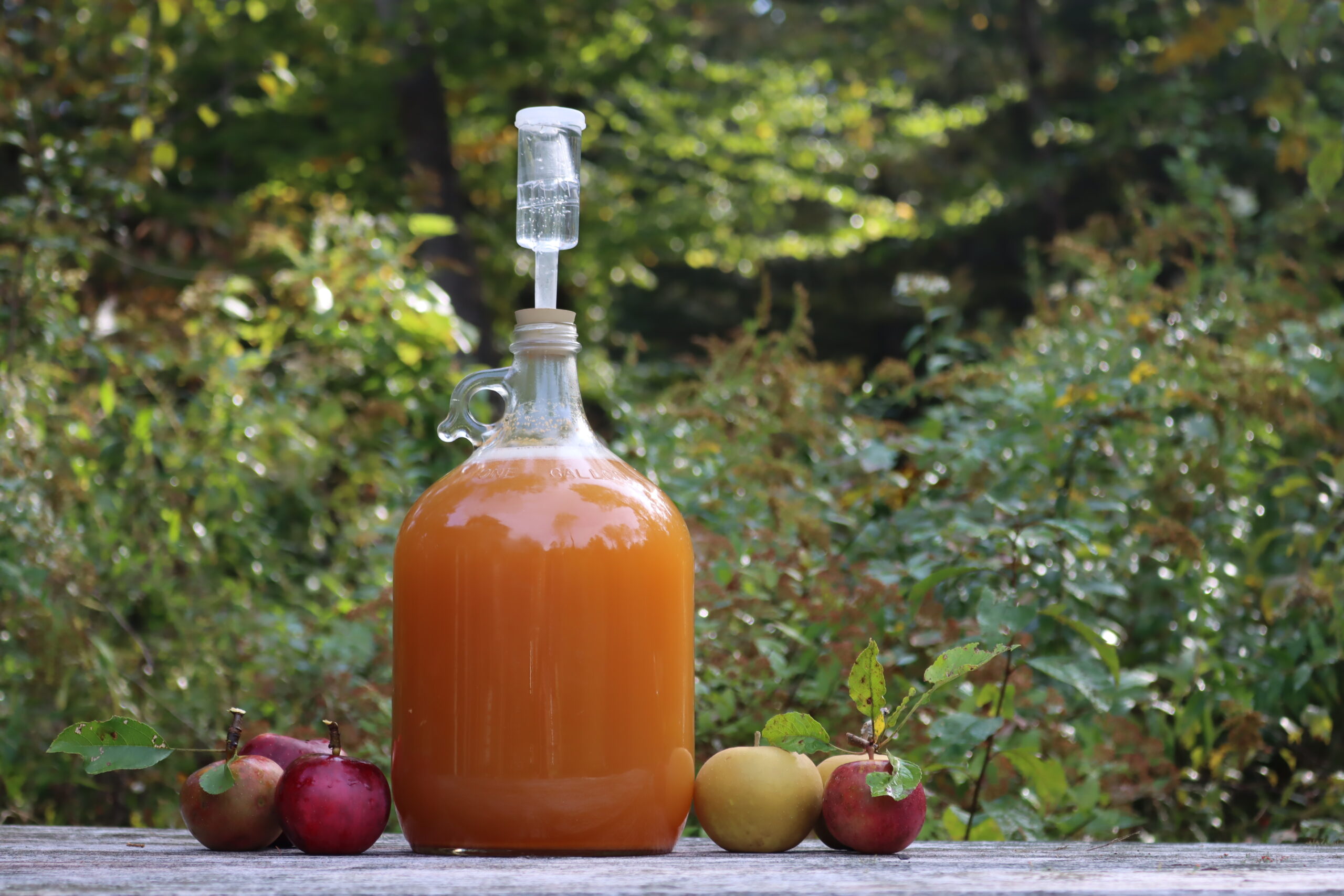
While most people are familiar with hard cider, that’s not the only way to bottle up a bit of apple bubbly!
Apple wine, made with sugar, is a lot easier than hard cider, especially for beginners….but it can be a bit lacking in body and complexity.
Apple mead (also known as cyser or, occasionally, cyzer) is a traditional honey wine that combines the best parts of hard cider and mead into one drink that’s just about perfect. The honey gives it body and a rounded flavor, while the fresh cider contributes acidity, tannin, and aromatics for a spectacular beverage.
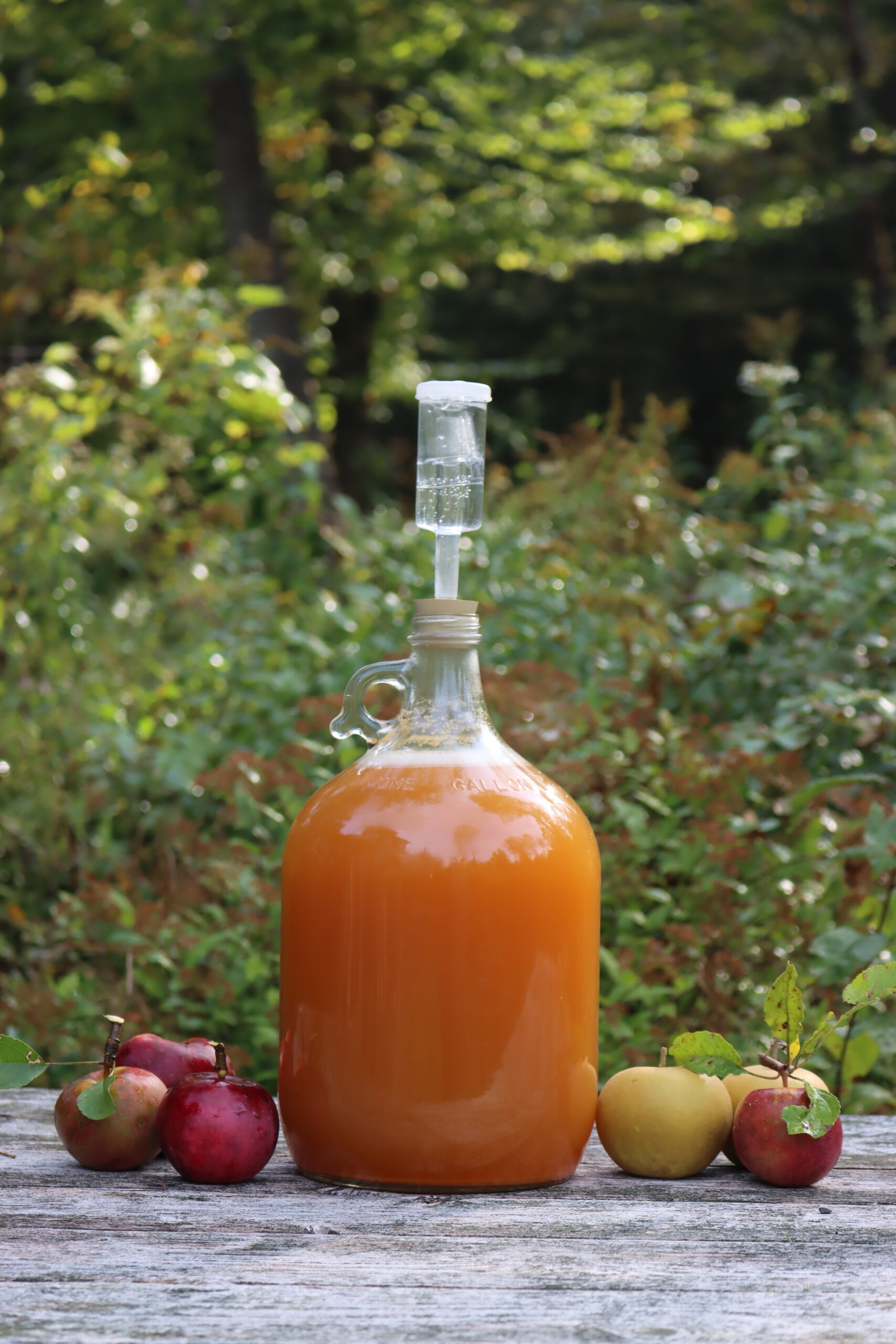
Cyser Vrs. Hard Cider
Hard cider is by definition just fresh pressed cider and yeast, and a lot is riding on the quality of the juice. Cyser, on the other hand, incorporates fresh pressed cider…but it also adds in other ingredients to balance the batch, so it’s much more forgiving.
The main problem with making hard cider is that it’s exceptionally hard to make a good batch without a hard cider orchard in your backyard (or a local apple orchard dedicated to growing hard cider varieties).
In general, the best-eating apples don’t make the best hard cider. You need some tannic apples (or “spitters” as they’re sometimes called) and some intensely sour acidic apples to contribute character to the cider…not just the sweet aromatic dessert apples we tend to prefer to eat fresh out of hand.
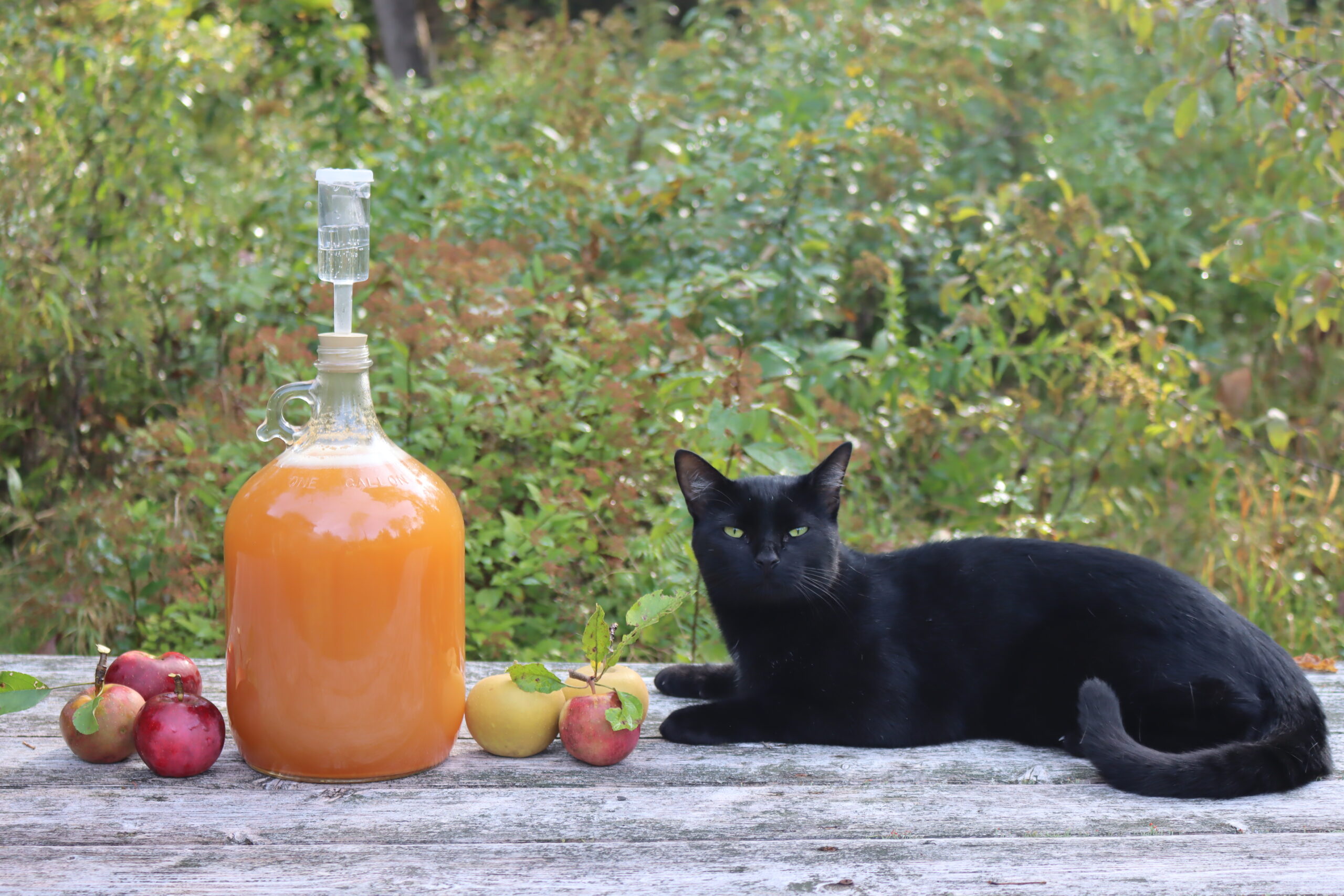
Beyond flavor, sugar content can be an issue, too. Even the sweetest apples have far less sugar than grapes, and most types of yeast will quickly consume all the available sugar, and as a result, most hard ciders are incredibly dry.
Lastly, fermented apple juice in hard cider usually lacks body, and it’s often quite thin in a glass. It lacks the well-rounded mouthfeel of a fine wine, and while hard cider has its place, it is something that you’d quickly throw back in with your buddies at the pub…rather than something that you’d sip with relish at a fine meal.
Cyser solves all those problems neatly, creating something that still incorporates all the wonderful flavors of a fresh pressed jug of cider, but adding enough other ingredients to ensure the end result is still absolutely spectacular.
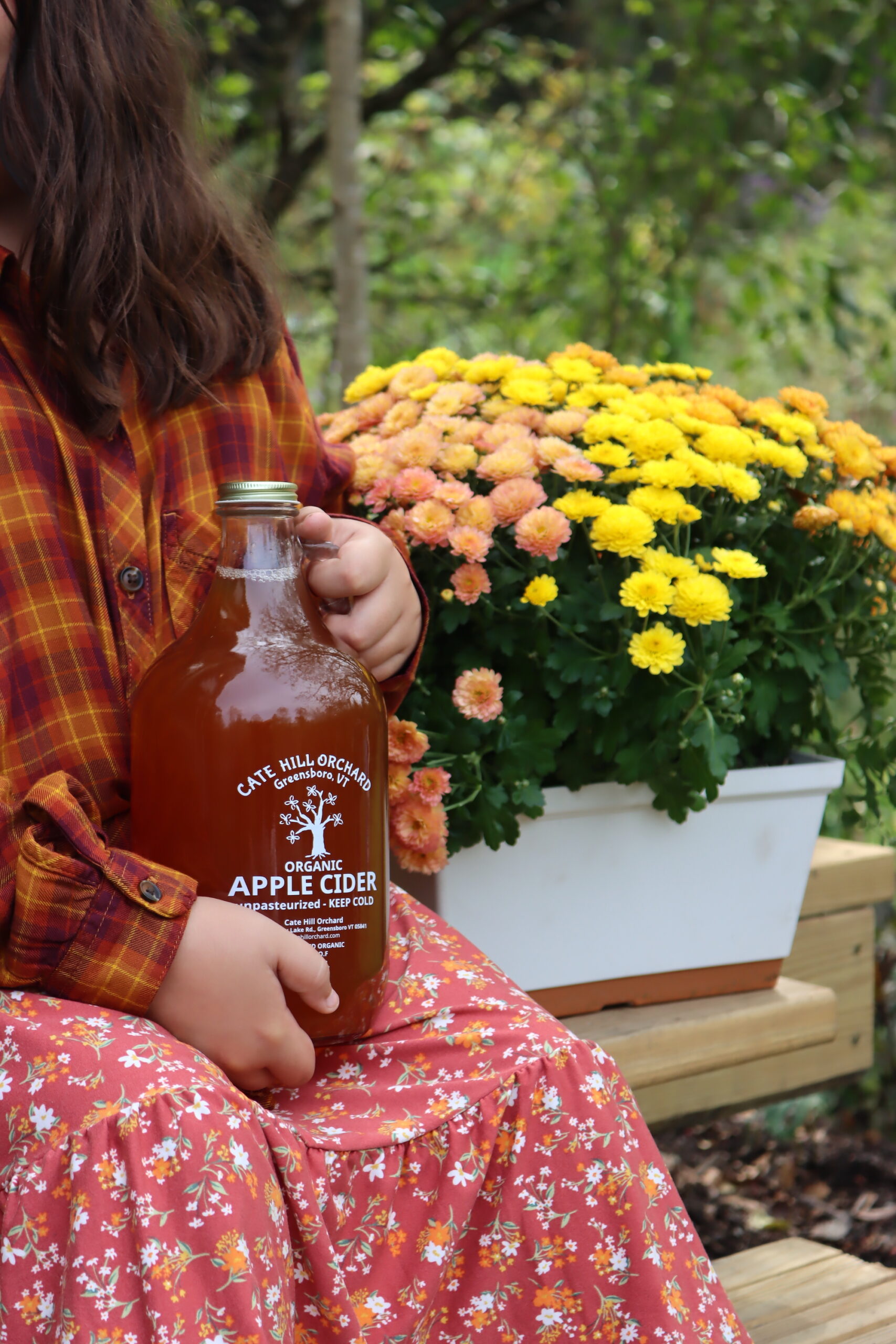
Honey adds body to the mix, but it also adds sugars, which feed the yeast and ensures that residual sugar is left over after fermentation. While hard cider is almost always dry, a cyser can be anywhere from semi-dry all the way up to a sweet dessert wine.
Since mead almost always incorporates other ingredients, you can add in acidity, tannin, yeast nutrients, and all manner of helpers to ensure that your batch comes out just the way you want it.
(Even if you’re just starting with a jug of sweet cider without any “hard cider” apples varieties in the mix.)
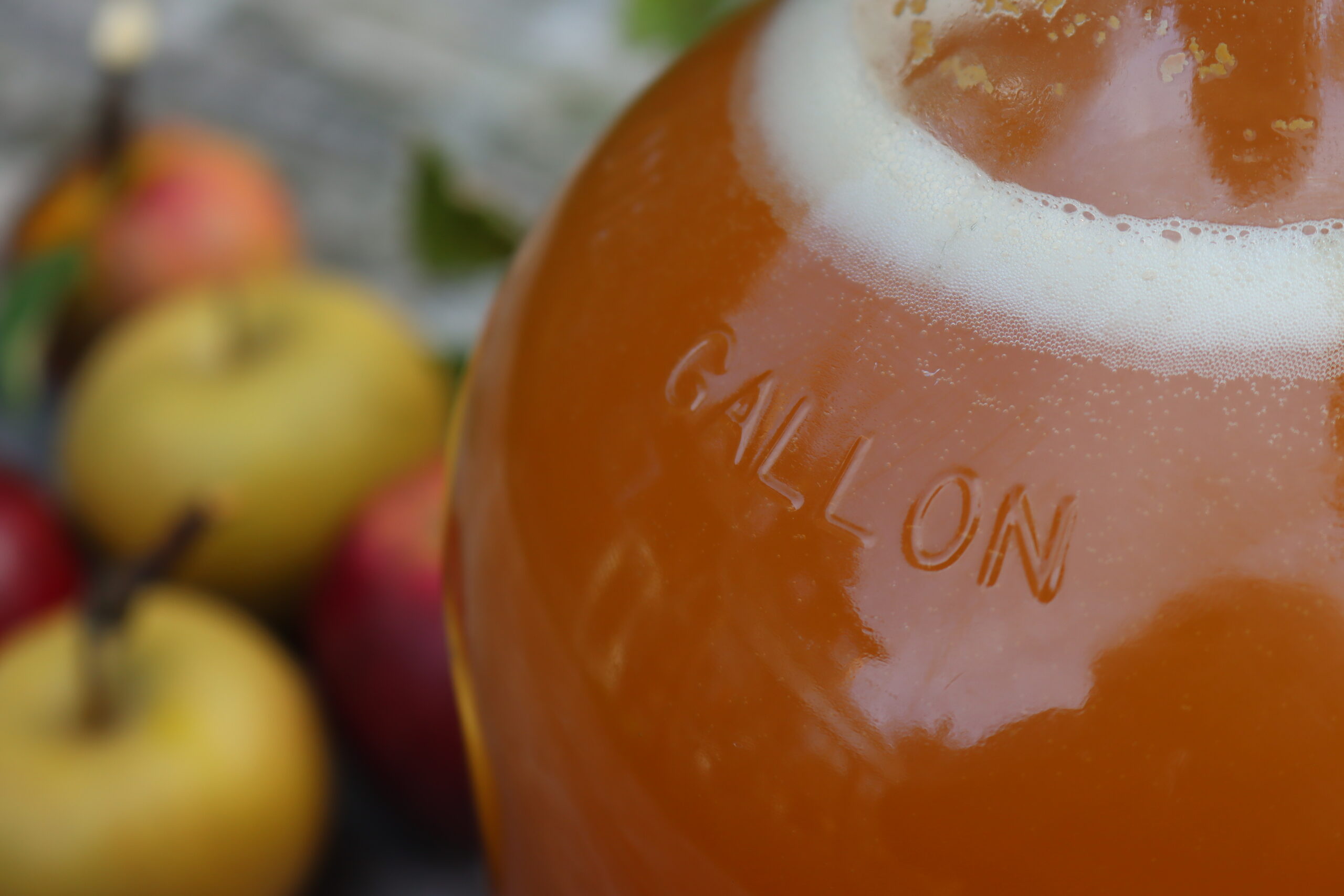
Ingredients for Cyser
At this point, I have quite a few mead-making books, and I consulted a number of them in developing this cyser recipe. Across half a dozen books, they’re all quite similar. This recipe is most like the one included in Amber Shehan’s Artisanal Small Batch Brewing (my favorite), but similar recipes are included in:
- The Big Book of Mead Recipes
- Let There Be Melomels: Fruit Meads Designed to Inspire Your Imagination
- Make Mead Like a Viking
- The Complete Guide to Making Mead: The Ingredients, Equipment, Processes, and Recipes for Crafting Honey Wine
If you’re new to meadmaking, you can read this primer on winemaking and mead ingredients to understand the purpose of each thing here. Still, I’ll briefly cover why each is added and what you can use as a substitute if you don’t have it.
Here is what you’ll need for a basic 1-gallon batch recipe for cyser:
- 1 gallon fresh apple cider (no preservatives)
- 2 to 2 1/2 pounds honey *see note
- 1 packet wine yeast (Lavin D47)
- 1 tsp. Yeast Nutrient
- 1 tsp. Pectic Enzyme
- 1/2 tsp. Acid Blend
- 1/8 to 1/4 tsp. Wine Tannin
*When using D47 yeast, about 2 pounds of honey will result in a semi-dry to semi-sweet mead, while 2 1/2 pounds should give you a sweet (but not overly sweet) mead.
Every recipe I consulted called for 1 3/4 to 2 1/2 pounds of honey per gallon, and the amount used varies based on the type of yeast used and how sweet you want the finished cider.
A high alcohol tolerance yeast that can ferment to 18% will call for more honey to start so it doesn’t end up intolerably dry (as opposed to a yeast that quits at about 12%, which would need less sugar at the start to ensure residual sugar after fermentation).
I’ve chosen Lavin D47 which is a middle-of-the-road yeast that works well with white wine, mead, and apple flavors. It has strong fruity and floral aromatics, and tops out at 15% alcohol.
Almost all of the mead recipes I consulted used that strain, but there was one exception. One used Lalvin K1-V1116 which is a vigorous fermenter with an 18% alcohol tolerance. It works well with cyser, but you’ll need to use a bit more honey unless you want a very dry cyser.
You can read my guide to types of yeast for winemaking and mead making if you’re curious about other options. In general, you can use any winemaking yeast here that’s suitable for white wine or mead.
Do not use standard bread yeast, it will make your batch taste like bread and quits at just a few percent alcohol. The results are pretty bad, and it’s just a waste of ingredients. If you’re doing this, please invest in wine yeast, as, believe it or not, the wine yeast strain actually contributes a lot of flavor to the finished batch.
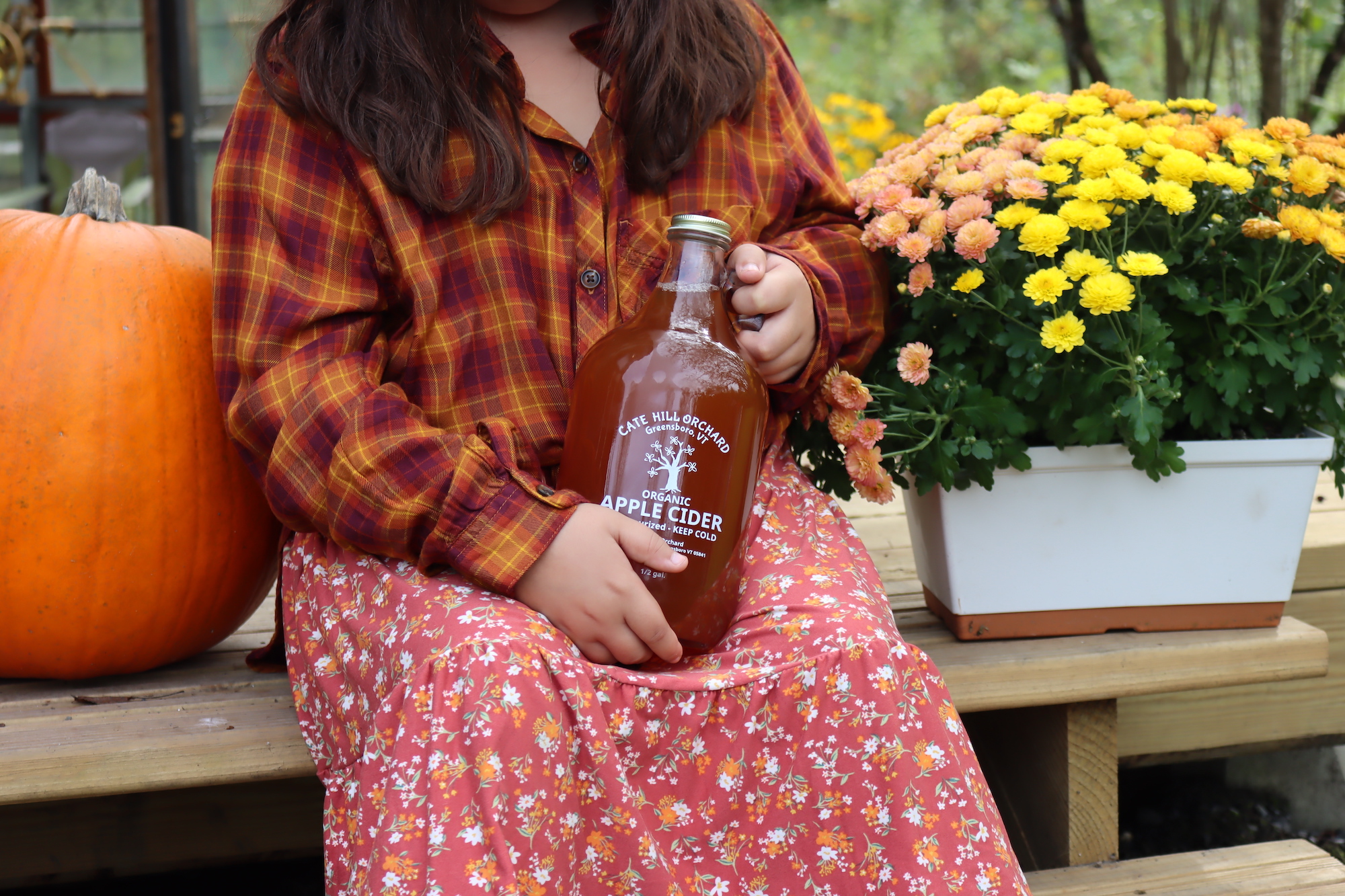
This recipe uses 1 whole gallon of fresh cider, but you won’t be able to fit it into the fermentation carboy at the beginning when all the other ingredients are added. You’ll need 3 quarts at the start, and the final quart should be frozen or refrigerated until later.
After primary fermentation, when everything is racked over into a new container with a siphon, you’ll top off that container with the additional quart (or however much you need to fill it to the neck of your container). If you drank that extra quart, no worries, you can use water to top it off…but obviously, cider is better here.
As for the other ingredients, the Yeast Nutrient feeds the yeast and gives them the micronutrients that apples are missing. If you don’t have it, add a generous handful of raisins (or golden raisins for a more neutral flavor) per gallon.
Pectic Enzyme is optional, but it binds the pectin in the apple juice and helps the cyser clear as it ferments. Without it, your mead will be cloudy, which is fine flavor wise, it’s just a cosmetic thing.
Acid Blend is added because most sweet cider blends are very sweet, without a lot of acidity. If you happen to have a particularly acidic batch of cider, you can skip it. Alternatively, add a tiny splash of lemon juice to your batch.
Wine Tannin helps balance the wine and give it a good mouthfeel, but it’s optional. If you had tannic apples in your cider, skip it. You can also add tannins by adding a cup of strongly brewed black tea.
Equipment for Making Cyser
Beyond the basic ingredients listed above, you’ll also need the following equipment:
- One Gallon Glass Carboy (often sold as a kit with a rubber stopper and water lock together)
- Rubber Stopper and Water Lock (if not included above)
- Brewing Siphon
- Wine bottles or Flip-top Grolsch bottles
- Bottle Corker and clean, new corks for bottling the wine
- Brewing Sanitizer
I’ve written this as a quick recipe, assuming you already know basic winemaking meadmaking equipment, but if you need to understand what each piece is and how it’s used, please read this primer on Equipment for Winemaking. It covers all the durable equipment you’ll need to make your first batch (besides your ingredients).
If you’re new to meadmaking in general, this introductory guide covers the basics of How to Make Mead (Honey Wine).
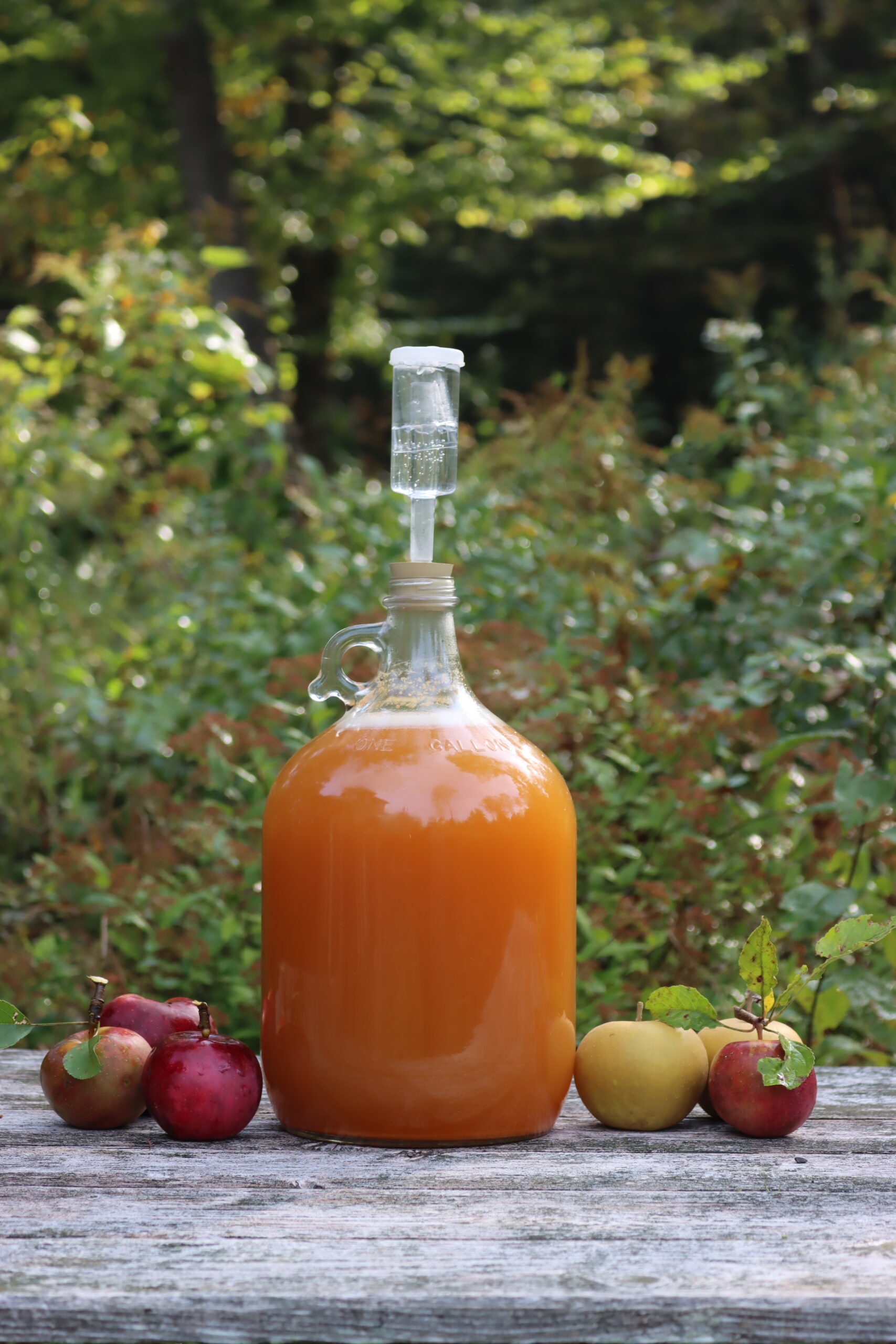
How to Make Cyser
Making apple mead starts by mixing all the ingredients (except yeast) and making sure the honey is fully dissolved.
Personally, I don’t like to heat the cider, and I try to start with very fresh unpasteurized cider. Heating it drives off some of the aromatics, and you lose flavor that way. That said, it’s sometimes helpful to gently warm it on the stove so you can get the honey to dissolve fully.
Raw cider does contain some wild yeast, but those wild yeasts will quickly be outcompeted by the packaged commercial yeast. If you want, you can add a Camden tablet to sterilize the juice and then wait 24 hours before proceeding, but I don’t use Camden tablets in my mead-making.
Again, mix everything together (except the yeast) and get it all fully dissolved. If you’ve heated it, allow the mixture to come back to room temperature before proceeding.
Transfer all the ingredients into a narrow-neck fermentation vessel, commonly called a carboy.
To start the fermentation, dissolve the yeast in a small amount of water and let it sit for about 10 minutes to rehydrate. Once ready, add the yeast to the carboy and fill it with water until it reaches the neck’s narrow portion. Seal the vessel with a water lock, which acts as a one-way valve, allowing carbon dioxide to escape while preventing contaminants from entering.
Within 24 to 72 hours, you should notice active bubbling, signaling the start of primary fermentation.
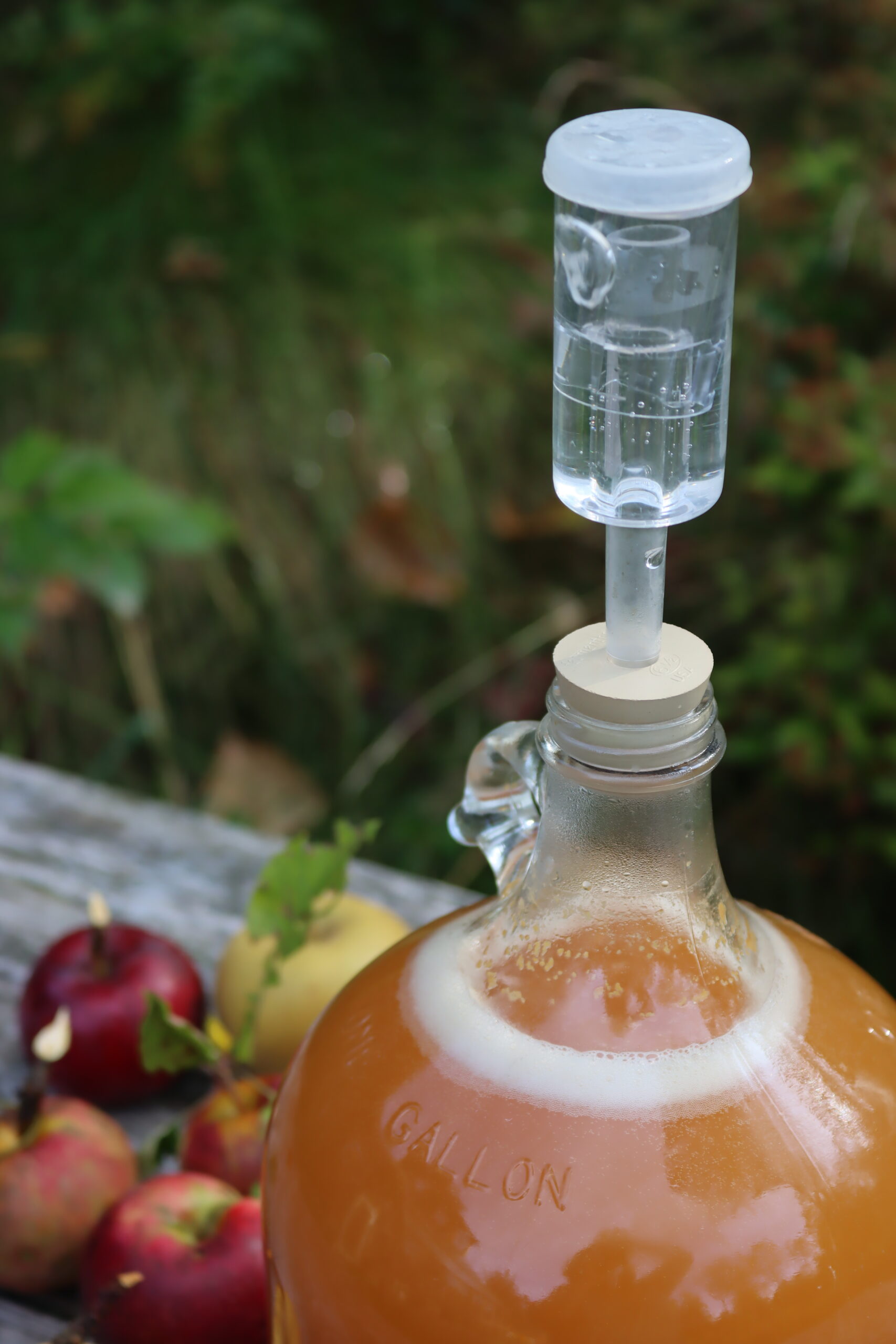
Let the apple honey wine ferment for approximately 10 to 14 days, or until the fermentation process begins to slow down.
By this time, the bubbling will have mostly ceased, and a layer of sediment will have settled at the bottom of the carboy.
Now, it’s time to siphon the mead into a clean fermentation vessel, carefully avoiding the sediment. Although fermentation isn’t complete, removing the sediment is crucial to prevent any off-flavors from developing in the finished mead.
Move the wine to a clean carboy, and top it with the remaining cider that you’ve kept fresh in the refrigerator or freezer (or unchlorinated water) to bring it up to the neck of the carboy. This is important, as you’re trying to minimize the surface area exposed to air, and getting it to the neck of the carboy helps with that.
Seal with a water lock and allow the mixture to ferment for at least another 6 to 8 weeks, but as long as 4 months before bottling.
If you’re new to making mead but familiar with wines, the time in secondary is usually 2 to 6 months, as honey takes longer to ferment fully since it’s less digestible than plain sugar, at least for the yeast.
At the end of the secondary, taste the cyser, and it should be delicious and just sweet enough to balance the flavors at this point. Otherwise, adjust to your tastes, and if you back sweeten, put it back in to ferment for another month or so before bottling.
Before bottle conditioning, the cyser will taste “rough” but it should be palatable, sweet enough to drink and have good aromatics. It’s not finished, but you should be able to see it’s promising future in a taste.
Once bottled, allow the wine to bottle-age for at least a month before drinking. This is one of those that gets better with age, so longer than a month is better.
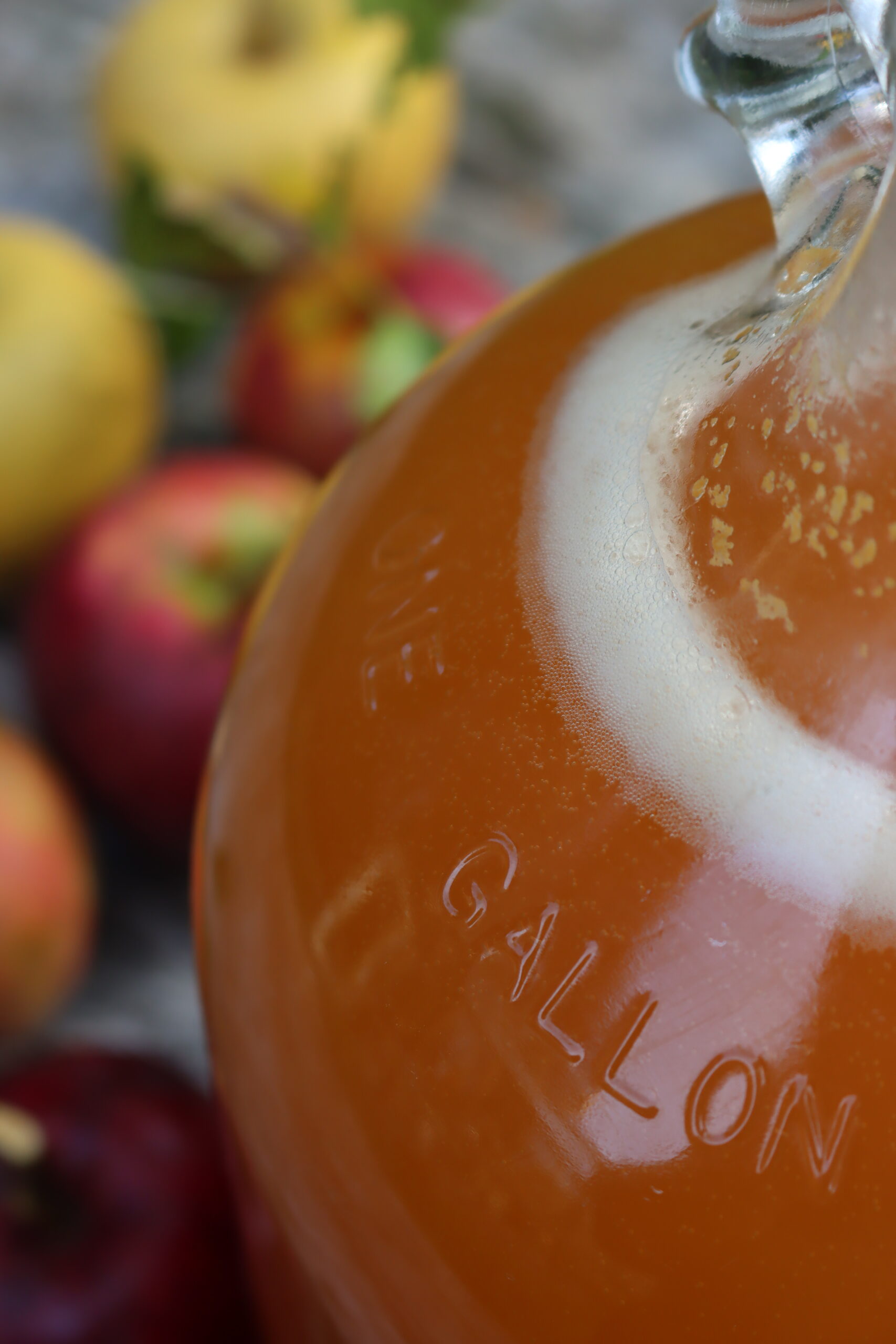
Cyser Variations
Apple mead is one of those recipes that has countless variations.
You can add spices, such as a cinnamon stick, nutmeg, a few cloves or a vanilla bean. Be aware that warm spices like cinnamon tend to intensify in fermenting and can get bitter, so start with a small amount.
Some people add brown sugar or a bit of molasses, which gives great color and adds warm notes. Generally, when you’re making country wines, you can add “apple flavor” by adding brown sugar, as it puts off apple-y esters as it ferments. Substituting a quarter to half a pound of honey for a bit of brown sugar works nicely.
Other autumn fruits also work well with apples, and a handful of cranberries can go a long way.
Ways to Preserve Apples
Looking for more ways to put up a bumper crop of apples?
- 30+ Ways to Preserve Apples
- Apple Wine
- Hard Apple Cider
- Apple Butter
- Canning Apple Sauce
- Canning Apple Cider
- Apple Jam
- Crab Apple Jelly
- How to Make Apple Cider Vinegar
- Apple Scrap Vinegar
- How to Dehydrate Apples
- Cider Syrup (Boiled Cider)
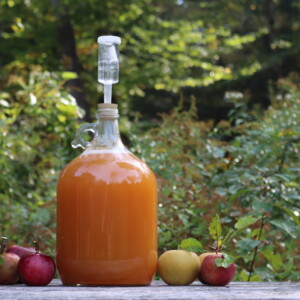
Cyser (Apple Mead)
Equipment
Ingredients
- 1- gallon fresh apple cider, see note
- 2 to 2 1/2 pounds honey, see note
- 1 teaspoon yeast nutrient
- 1/2 teaspoon acid blend
- 1 teaspoon Pectic Enzyme
- 1/8 to 1/4 teaspoon tannin powder
- wine yeast, Lavin D47 Suggested see note
Instructions
- Start by removing about 1 quart of juice (4 cups) from the gallon. Save this juice in the freezer for topping the mixture off in secondary.
- Dissolve all the ingredients (except the yeast) in the remaining 3 quarts of apple cider. Sometimes heating gently can help with this, but do not boil.
- Pour the sweetened juice mixture into the fermentation vessel and allow it to come back to room temperature if it was heated.
- Dissolve the winemaking yeast in a small amount of unchlorinated water (about 1/4 cup). A packet is sufficient to start fermentation in up to 5 gallons of juice, but you still use a whole packet for anywhere between 1 and a 5 gallon batch. Allow the yeast to sit for about 10 minutes to rehydrate.
- Add the wine yeast to the fermentation vessel with the juice.
- Top off the fermentation vessel with some of the apple juice you set aside at the beginning until the level of the juice is at the base of the neck of the fermentation vessel. Be sure to leave 2-3 inches of headspace to allow the mixture to bubble.
- Cap with a rubber bung and waterlock (filled with water) and allow the mixture to ferment in primary for about 7 to 10 days. Fermentation will be very active, and may bubble up into the water lock. If so, clean out the water lock and re-attach it as necessary.
- After primary fermentation, use a brewing siphon to move the ferment to a clean fermentation vessel, leaving any sediment behind.
- Re-cap with a water lock and allow the mixture to ferment in a cool, dark place in "secondary" for at least 6 weeks, but preferably longer, like 4 to 6 months.
- When fermentation is complete, bottle the wine in wine bottles and allow it to bottle age for at least a month but preferably longer before drinking. If you'd like sweet wine, back sweetening may be necessary at this point. Otherwise, bottle and allow the mead to bottle condition for at least a month before enjoying
Notes
Amount of Juice
At the start, you need about 3 quarts of juice because the honey will take up some space in the fermenter. Save the last quart of juice for topping off the container after it is racked over into secondary. Some of the volume is always lost when you leave the sediment behind in the primary fermentation vessel. Placing the last quart of juice in the freezer until needed ensures it stays fresh until needed.Amount of Honey
Most recipes suggest between 1 3/4 pounds honey and 2 1/2 pounds honey. At 1 3/4 pounds, the result will be very dry, and I don't recommend it. At 2 pounds, you'll have a semi-dry to semi-sweet mead that has enough residual sugar to be interesting. At 2 1/2 pounds, the batch will be sweet, but not overly so. This assumes you're using the recommended Lavin D47 yeast with a 15% alcohol tolerance. Yeast with lower alcohol tolerance will result in more residual sugars, and conversely, yeast with a very high alcohol tolerance will use up more sugars and result in a dryer finished mead.Yeast
For cyser, choose a wine yeast with moderate alcohol tolerance that either ferments clean or adds light fruit flavors. Good yeast choices include Lavin D47, Lalvin QA23, Red Star Premier Cuvee or Lavin EC-1118.Mead Recipes
There are so many ways to make mead at home! Try out any of these mead recipes:
- Elderberry Mead
- Rose Petal Mead
- Flower Mead (with any edible flower)
- Elderflower Mead
- Quince Mead
- Aronia Mead
- Herbal Mead (with any Edible or Medicinal Herb)
- Lemon Balm Mead
- Rhubarb Mead
Fermentation Recipes
Keep your kitchen bubbling with these fermentation recipes!
- Spruce Beer
- Beginners Guide to Lacto-fermentation
- How to Make Sauerkraut
- How to Make Sauerkraut in a Crock
- Lacto-fermented Pickles
- How to Make Fruit Vinegar
- How to Make Apple Cider Vinegar
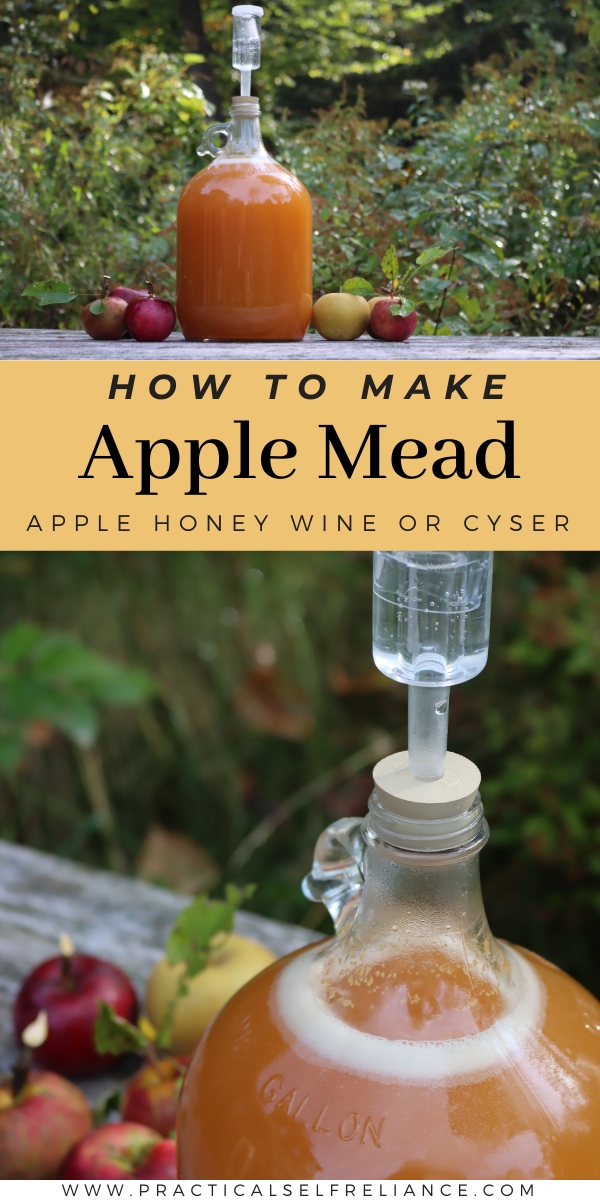


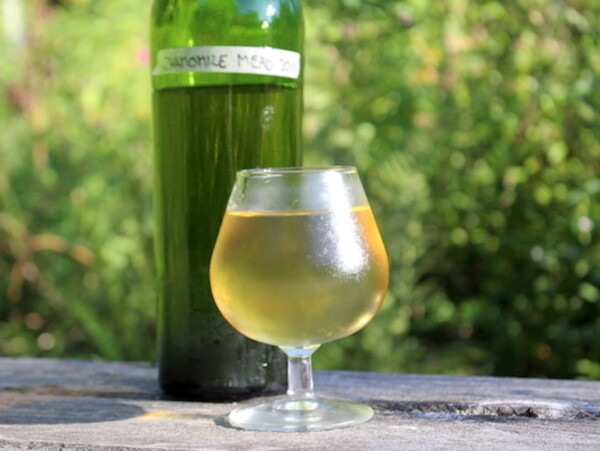
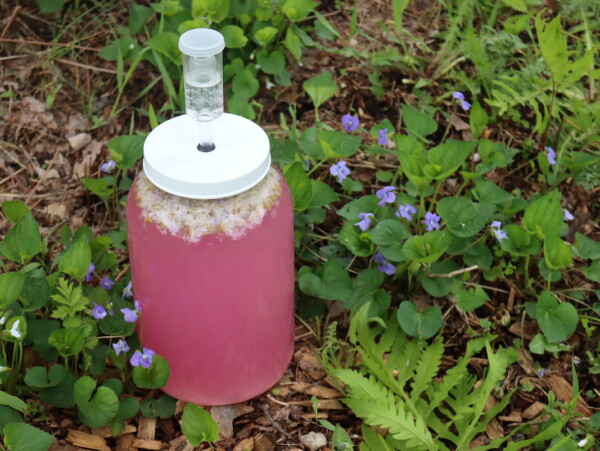










Appreciate it this, gonna give it a go. Am I crazy or did you never mention temperature anywhere? Guess room temp must be fine.
Yes, this one ferments at room temperature.
Do you find that the brown sugar adds a molasses flavor? Was considering adding some, but read comments elsewhere that say it does.
Slightly. Brown sugar often gives ferments of any kind an apple-y flavor, or kind of a warm apple pie flavor, which is also kinda molasses-y. I think it’s nice, if used sparingly, but it’s not overtly molasses-y.